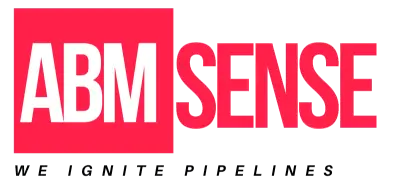What is Dynamic Content, and How Does It Work?
What is dynamic content, and how does it work? Content that is web-based can change depending on a number of factors—like user behavior, tastes, and data—and still maintain its designation as web content. Under this umbrella, dynamic content is more of a subset. It is defined by the degree to which it can be personalized, and it can be personalized to a very large extent. Indeed, in many instances, personalization can happen at the level of individual users.
A study conducted by Epsilon found that 80% of consumers are more inclined to buy something when brands provide them with a personalized experience. This reveals the relatively lower efficiency of static content served to a mass audience.
Understanding Dynamic Content in Depth
It is not merely an updated webpage that constitutes dynamic content; rather, it includes various components that adjust in real-time. For example, when a guest arrives at your website, the content shown can depend on their demographic profile or prior interaction with the website. Companies like Amazon have this down to a science and use it quite well to showcase products in a way that is most relevant and appealing to the guest that really should be called a “customer.”
Moreover, you can customize dynamic content according to these factors:
- User position
- Source Material:
- History of Browsing
- Type of device
- Access time
This ability to adapt allows businesses to craft personalized experiences that truly connect with each user. Furthermore, businesses that utilize dynamic content to its full potential are seeing better marketing results compared to their static content counterparts.
What is Dynamic Content, and How Does It Work? The Mechanics Behind It
What is dynamic content, and how does it work? The mechanics are based on data collection and the use of algorithms. When a user engages with your site, a vast amount of data is recorded, from the most basic of click patterns to the most intimate of shopping habits. This data is then sliced, diced, and served up in different ways to figure out what you really want to see. And then it shows you that.
Integrating dynamic content commonly consists of:
- Integrating a content management system (CMS) that is dynamically capable.
- Using user data and analytics tools to curate content.
- Dividing audiences into segments to direct messages appropriately.
As a result, companies can attain increased rates of involvement and conversion. HubSpot reports that personalized calls to action perform 202% better than their generic counterparts. When a user receives content tailored just for them, it’s clear that their level of engagement reaches much higher altitudes.
Applications of Dynamic Content in Digital Marketing
There are several different ways that dynamic content can be applied across the channels of digital marketing. Here are several common applications:
- Emails: Customized email campaigns can feature recommendations for users that are based on the user’s specific purchase history.
- Internet Sites: A landing page can be tailored to a web visitor’s profile, displaying pertinent propositions.
- Advertisements: Personalized ads can showcase items that are in line with a user’s hobbies and previous actions.
As an example, Netflix leverages dynamic content to suggest programs or films that viewers watch, rendering the platform even more compelling. This tailored approach assists in holding onto presently engaged users while gathering fresh viewers.
Benefits of Using Dynamic Content for Businesses
Providing dynamic content can yield a number of beneficial results for a business. These advantages are:
- More Engagement: There is a greater likelihood of user interaction with content that has relevance to them.
- Increased Conversion Rates: Customized messages produce greater revenue.
- Improved customer experience: Personalized content ensures that users feel valued.
In addition, Adobe’s report states that businesses using dynamic content enjoy conversion rates that are three times higher than those of their static counterparts. This observation underscores the significant advantages dynamic content can confer.
Final Thoughts on Dynamic Content
In conclusion, grasping the concept of “What is dynamic content, and how does it work?” is crucial for companies that are intent on refining their marketing stratagems. Dynamic content can serve as a potent vehicle for upping a business’s engagement and conversion stats. When it comes to user stimuli, nothing beats dynamism.
Moreover, as technology keeps advancing, the powers of dynamic content will augment and provide even more groundbreaking means of interacting with customers. The upcoming era of digital marketing will most certainly rely on dynamic content to remain competitive and ensure it’s the “new” form of interaction that can replace the dependable old standards of the digital world.
Explore More on us
Discover insightful blogs on our Blogging Space, check our WordPress Visitor Identification Plugin, and learn more about Account-Based Marketing.


